As an Amazon Associate I earn from qualifying purchases.
What Do Baby Iguanas Eat?
Before you acquire an iguana, it’s important to remember that they are not as popular as other reptiles. Iguanas are reptiles, and properly caring for them takes time, patience, and money. Finding the proper food or veterinary treatment may be difficult in some areas.
Baby iguanas, on the other hand, seldom live longer than a year in captivity. They should be kept under constant watch and fed healthy food. As a result, if you decide to acquire a baby iguana, you must be very cautious. Stay with us at FeedingNature and learn all there is to know about feeding a baby iguana as well as how to do it effectively.
What Do Baby Iguanas Eat?
The average lifespan of a domestic green iguana is 15 to 20 years, although certain individuals can survive for up to 30 years. Green iguanas are herbivores, which means they consume plants. In the wild, iguanas eat flowers, leaves, and certain types of fruits.
A well-balanced diet of greens, vegetables, fruits, and other items will help guarantee that you have a happy and healthy iguana. Make sure your pet has a variety of different meals to eat. This is an excellent way for your pet to try new and interesting foods while also ensuring that the diet is well-balanced. The majority of the nutrients needed can be found in pet shops and supermarkets.
Vegetables & Fruit
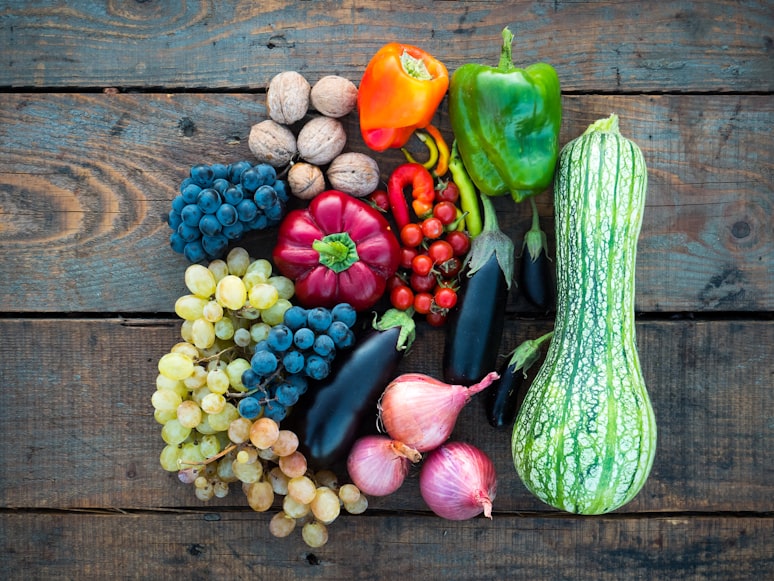
Most of your pet’s food should be fresh greens and vegetables. To make eating the food easier, it should be chopped up. Mustard, collard, dandelion greens, kale, turnip greens, and romaine lettuce are some of the greens you could offer your pet. Shredded carrots, green beans, peas, and other legumes, squash, and bell peppers are all good options of vegetables you can feed them.
When fresh food is not available, frozen vegetables can be used instead. An excellent emergency meal is a mix of french-cut green beans, carrots, peas, corn, and lima beans. Before feeding your iguana frozen veggies, be sure they’ve been thoroughly defrosted. Thawing frozen food in a hot water bath is an easy method to do so.
Fruits can be given to an iguana as a pleasant treat. Strawberries, bananas, blueberries, cantaloupe, and apples are some of the fruits that your pet may enjoy. Chopping fruit for consumption is the same as with other foods; it should be chopped.
Iguana Food
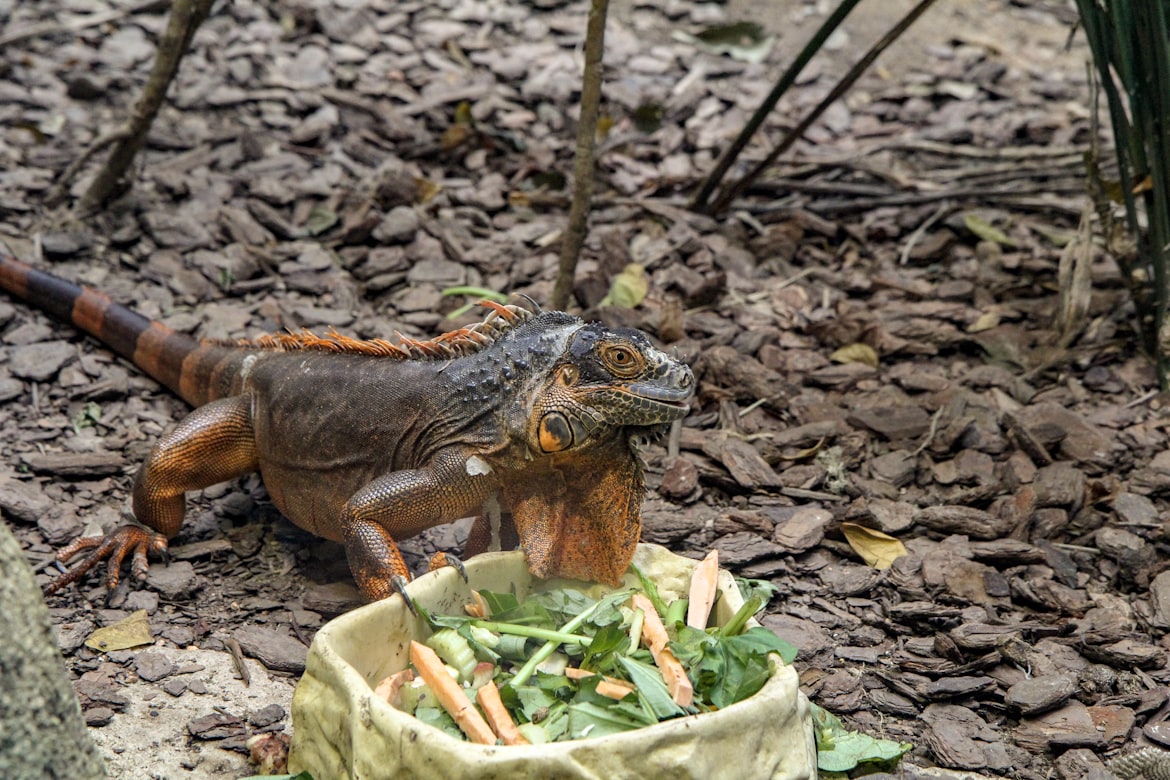
Commercial iguana food is available, which may be added to the diet of your pet. Iguana food is usually given in pellet form and can be mixed with other meals. Dry iguana pellets are more difficult to eat if they are not moistened before being fed. Your iguana should be fed only with food intended for reptiles. The primary diet of your lizard should not include iguana food.
Bread & Grains
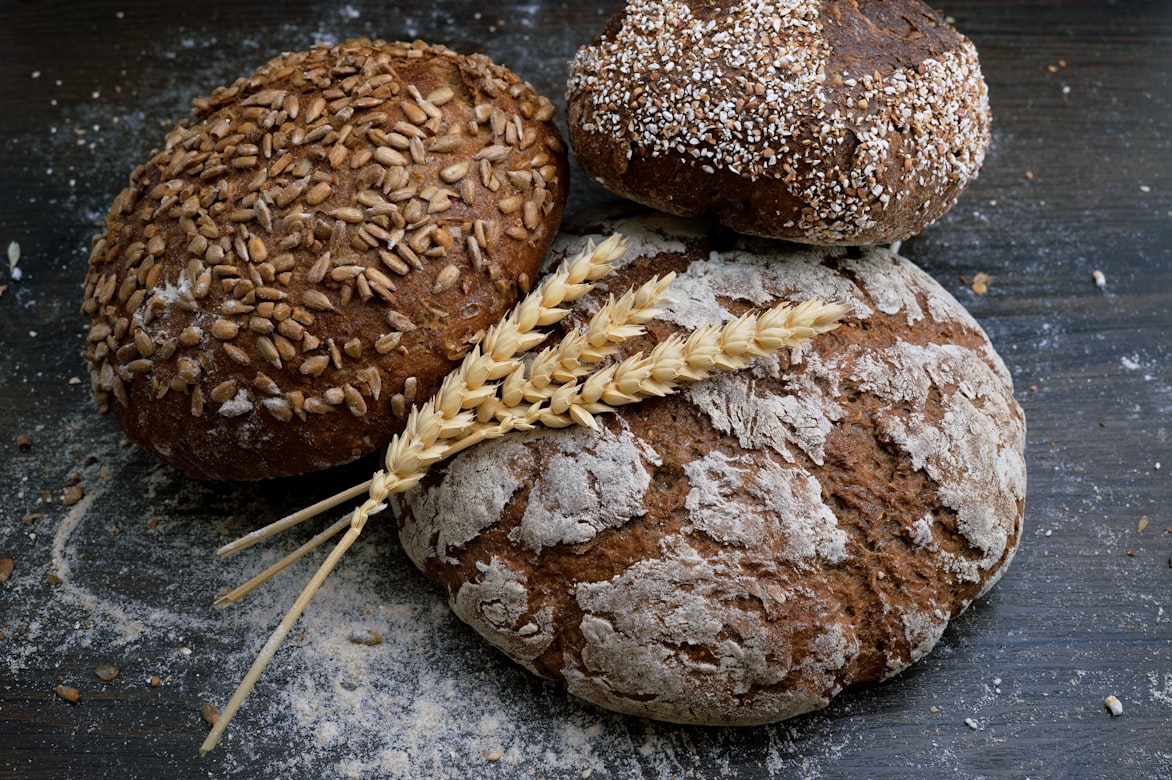
Grains and bread may be given to your pet on rare occasions. Pasta, rice, and whole-grain bread are all wonderful treats for your iguana. Make sure the meal is chopped into small pieces to make it more appealing to chew.
Insects

Mealworms and crickets are frequently included in the diets of pet baby iguanas. Green iguanas, on the other hand, are herbivores and aren’t meant to eat insects.
Adult iguanas do not require a lot of protein, and insects are an excellent source of nutrients. Greens and vegetables provide the insect protein that adult iguanas require. A pet iguana may be harmed by too much protein.
Water
A pet iguana requires a constant source of water, even if he receives most of his drinking from his diet. A big dish that is difficult to spill and brimming with clean water should be accessible at all times.
Supplements
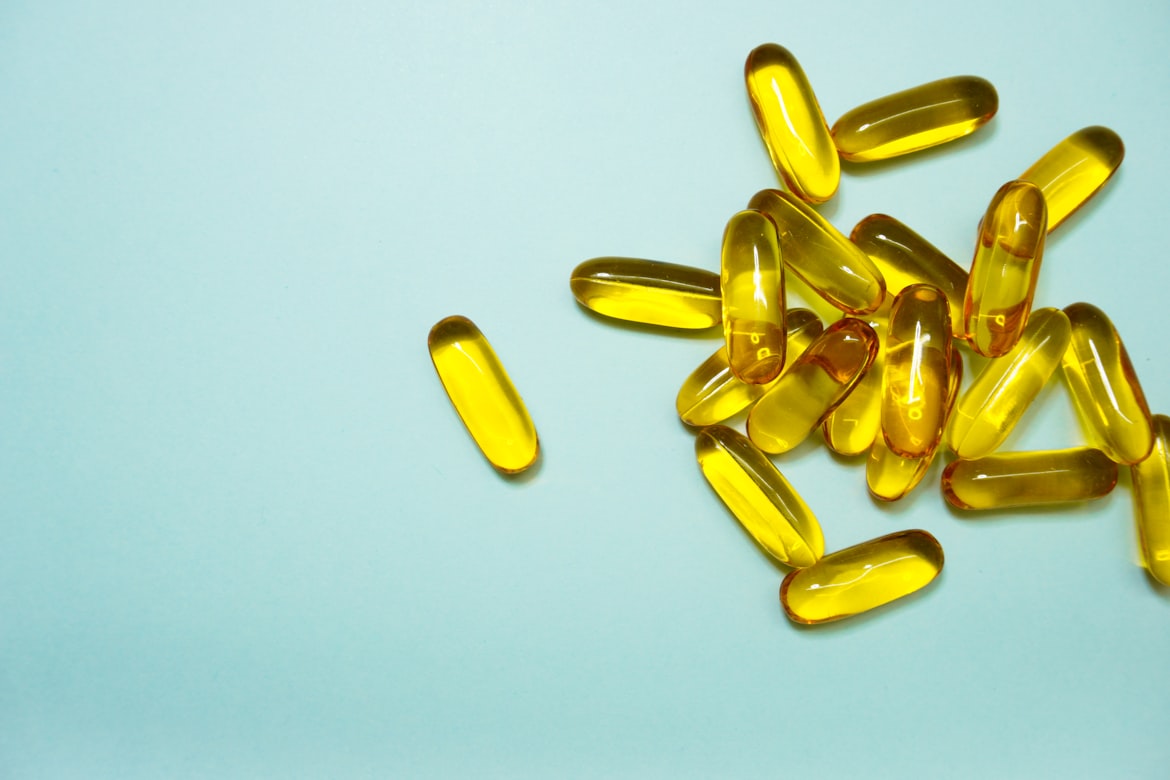
Reptile supplements ensure that your pet iguana receives all of the vitamins and minerals it requires. Vitamin D3 and calcium tablets can be given to your pet once a week. About once a week, a reptile multivitamin may be added to his diet.
Supplements generally come in the form of powder and are simply added to meals. Only a tiny amount is required. Supplements should be used in moderation with your iguana’s food. Excess supplementation can be dangerous.
What Do Baby Iguanas Eat in The Wild?
There are a variety of different iguana species, and each requires a distinct diet. We’ll look at each type of iguana’s natural food sources.
Green Iguanas
Green iguanas are herbivores that primarily consume leaves, which means they are folivores. In the wild, a green iguana will mostly eat fruits, flowers, and foliage in the jungle canopy where it resides.
Green iguanas in the jungles of Central and South America will primarily consume leaves off trees and vines. They will also eat fruits to a lesser extent when these are in season.
Red Iguanas

The red iguana is a color variant of the green iguana, which means it must eat the same food like a green iguana. That implies that red iguanas should consume leafy greens, vegetables, and fruits in their diet.
How To Feed Baby Iguanas?
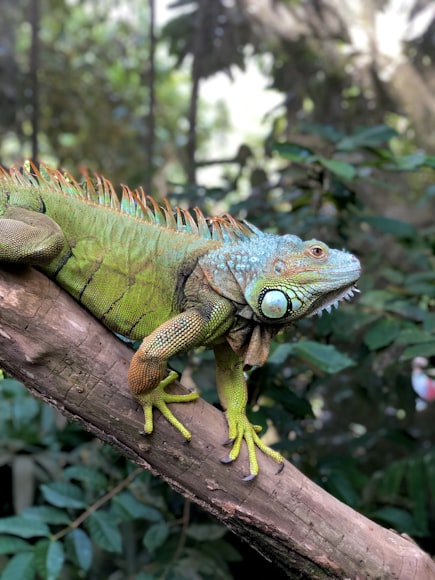
Some individuals become frightened if they find out that their baby iguanas are refusing to eat the food they are being offered. However, keep in mind that iguana hatchlings consume the yolk sac up to two weeks after they are born. So, once the two weeks are up, you may start feeding them a little bit of food.
It’s much easier and more effective to feed a baby iguana after it has basked. You must maintain temperatures in the mid-80s °F for these animals, and the basking temperature should be at least a hundred degrees Fahrenheit (between 100 and 110 °F), or they won’t develop their metabolism.
Remember, in the wild, iguanas live on hot rocks that comfortably warm our lizards. They’ll then go looking for leaves, weeds, and fallen fruit once they’re nice and toasty. Keeping temperatures high enough to pique their desire is critical.
Prepare some collard greens, shredded carrots, and yellow squash for the primary dinner. Because of their bright color, shredded carrots and yellow squash are a good choice.
An important step to consider is to make sure that the food is not supposed to be too cold. If you’re using frozen veggies, allow them to sit out for a while before feeding your pet baby iguana.
As a first step, remove your baby iguana from his cage since you can’t feed him inside it. Now, change how you’re holding it by softly grasping his mouth with one hand. On the other hand, you’ll offer him food.
Hand feeding an iguana entails using one hand to hold him and the other to feed him. It would be much easier just to offer food while he’s standing free, but keep in mind that we’re dealing with a newborn, unruly iguana here.
Following that, put a little meal on the tip of his nose. He may become irritated and open his mouth, which is precisely what we want. Remember, we took the warm iguana right after his basking session, so he’ll be very active and aggressive. Most likely, he’ll try to protect himself by opening his mouth, which is why we’ve planned it that way.
You just apply a little pressure to the edge as he opens his mouth. Fill his mouth with this food gently. You can’t choke him unless you tube-feed the animal, but that’s a different story altogether. They will swallow their own food when it reaches a specific point in their throat.
As your baby iguana begins to taste it and pull it down on his own, watch as he learns the flavor of what he’ll eat. He’s learning the flavor of the meals he’ll consume. If he keeps his mouth open, you can provide him with a tiny bit more. Don’t be concerned about the quantity of food you’re providing him; his own teeth will fight it off, and we may simply let him finish swallowing it after a little struggle.
If your iguana refuses to open his mouth, try pushing the tip of your index finger against the base of his snout and gently encouraging him to do so. Patience is sometimes required.
Tell them that it is not something that will harm them. Hand feeding is a fascinating procedure that helps to connect you and your pet together. So, making a few efforts over time may result in considerable benefits.
What Are The Natural Predators of Baby Iguanas?
The word “iguana” is a catch-all term that refers to a wide range of lizards and lizard-like animals. The most prevalent is the green iguana, which may be found in parts of North and South America and is utilized as a pet by many people. Other varieties include the oceanic and desert iguanas. The iguana has a variety of predators because there are so many various types of iguanas, as well as numerous distinct individuals, in the wild.
Birds
One of the major predators of iguanas is the eagle. Birds such as eagles, hawks, and owls regularly consume both adult iguanas and unhatched eggs. Iguanas are also eaten by herons, other water birds, and several species of seabirds. These iguanas are most vulnerable just before giving birth and after they have completed their growth.
Snakes
Snakes are a significant predator of both desert iguanas and green iguanas and their relatives, including guanay. Venomous snakes consume desert iguanas, while boa constrictors and near relatives devour green iguanas. Other reptiles, such as ground lizards, may also eat them.
Mammals
Iguanas are not naturally preyed upon by mammals, however invasive species such as dogs, cats, and rats take them out of their natural environments. This is also true in places where the iguana is an invasive species, such as in Florida, where green iguanas abound. Mammalian animals such as household pet raccoons and rats prey on these iguanas.
Amphibians
Green iguanas are sometimes preyed upon by crocodiles and alligators. On the other side of the coin, black iguanas have been observed digging up and consuming these amphibians‘ eggs. The assaults by alligators and crocodiles on black iguanas may be defensive in nature, rather than a typical predator-and-prey scenario.
Fish
Larger predatory fish are a threat to marine iguanas. Sharks, in particular the tiger shark, which feeds on a wide range of prey species, eat iguanas on a regular basis.
Humans
A human is by far one of the most frequent predators an iguana may encounter. It’s surprising to learn that humans are a significant killer of iguanas, but they are eaten frequently in many regions due to their popularity as food. They’ve been given the name chicken of the trees since they’re frequently hunted.
Green iguanas are eaten throughout Central and South America. To meet the high demand, they are bred and raised on farms.
Are Baby Iguanas Healthy To Eat?
Green iguanas are hunted and eaten in several Latin American countries, according to National Geographic. In some countries, the species has been classified as endangered since people have been eating them for such a long time.
At least 10,000 years ago, Iguanas first entered human consciousness as a food source owing to their accessibility. It was also less hazardous for early man to capture than other creatures he encountered.
The meat of an iguana is prized in Mexico, Central, and South America for its high protein content and low-fat content.
Some restaurants in the United States will even provide iguana-based recipes on their menu. The flesh is incorporated in meals like tacos, stews, burritos, and soups and provides a mild flavor. This may be strange to some of us, especially for those that keep iguanas as pets, but we must be conscious that there are cultural differences that may exist, depending upon the region.
Amazon and the Amazon logo are trademarks of Amazon.com, Inc, or its affiliates.

